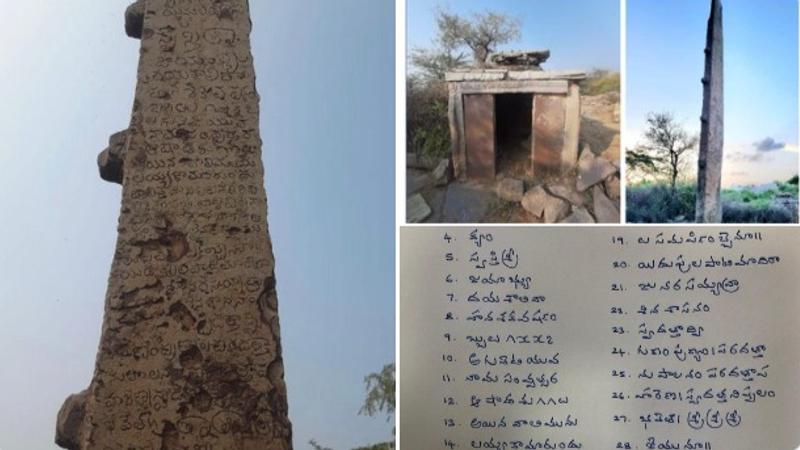Published 23:18 IST, February 7th 2024
Telugu-Tamil Inscription on 17th Century Lamppost Reveals Historic Kashi Connections - Read More
An archaeological survey finds, a 390-year-old lamppost with a significant inscription dedicated to Kashi Viswanatha, read more

An archaeological survey finds, a 390-year-old towering lamppost with a significant inscription dedicated to Kashi Viswanatha. The discovery has been unearthed in a village called Mudimanikyam, nestled within the Adavidevulapally mandal in Telangana's Nalgonda district.
This discovery has not only shed light on the region's rich history but also unraveled intriguing trade links dating back centuries. The mystery was decoded by the Archaeological Survey of India's Epigraphy wing in Mysore.
The inscription, a fusion of Telugu and Tamil languages, decodes the cultural amalgamation prevalent in the region during the 17th century.
ASI Epigraphy Director Muniratnam Reddy said, "The inscription is engraved on a deepasthabham, near the ruined Siva temple on the banks of Krishna river in the village Mudimanikyam. It is written in Telugu mixed with Tamil language and Telugu characters and dated to 1635 C.E. The inscription begins with obeisance to the god Kasi Viswanatha and records the erection of a pillar for the god Kasi Visvanatha by Polinedu, son of Vali Munulayya."
The lamppost's strategic location near the ruins of a Siva temple along the banks of the Krishna river suggests its role as a navigational landmark for traders and travelers traversing through the region.
Its presence indicates the existence of thriving trade routes during the early medieval period, making Mudimanikyam a hub for commercial activities.
This remarkable discovery not only illuminates the cultural heritage of southern India but also reaffirms its significant role in fostering inter-regional trade networks during antiquity.
Updated 23:18 IST, February 7th 2024




